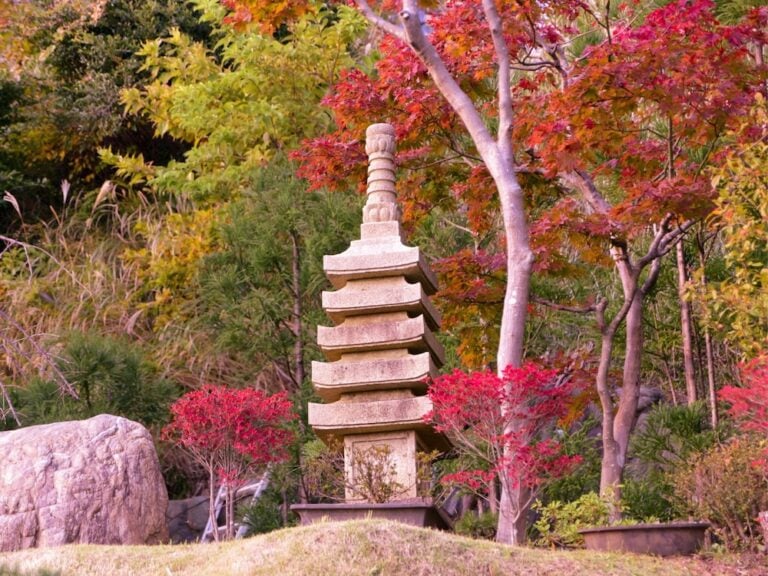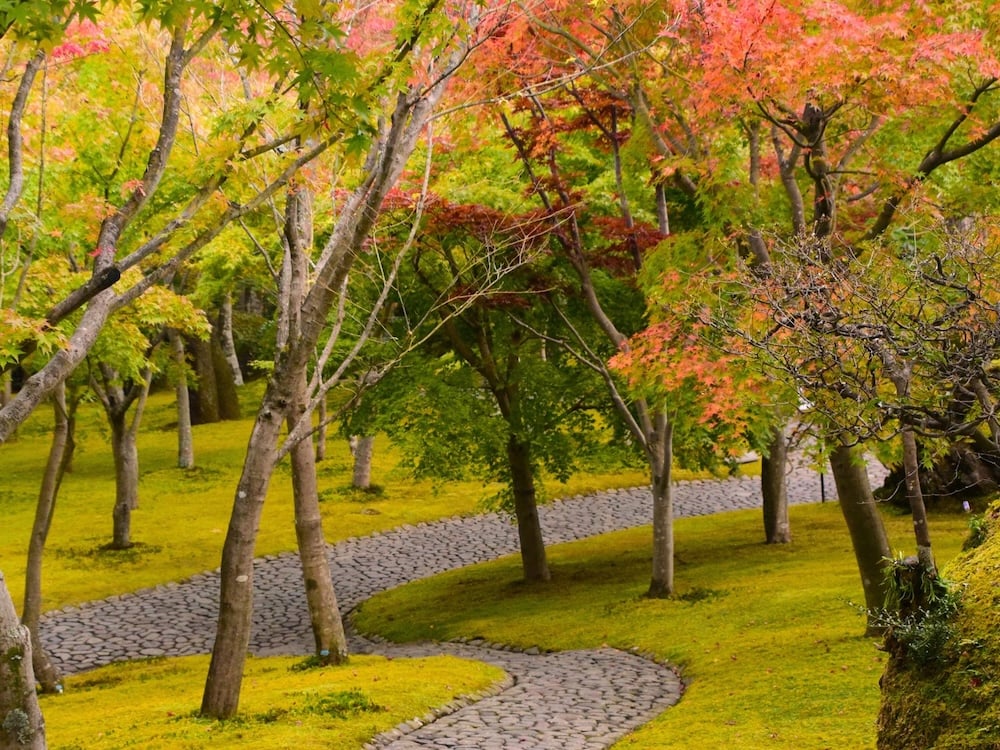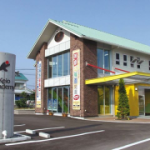
After more than two and a half months of sweltering 35-degree Celsius heat, it is finally time to turn off the air conditioner and step outside. Tokyo Station, the central hub for all Shinkansen lines and numerous other trains, provides easy access to quieter, more scenic destinations outside the city. Additionally, several other stations around Tokyo offer convenient routes for escaping the urban noise.
Before hopping on a train, keep in mind that overseas tourists are also making their way to Japan to enjoy the fall weather. Popular destinations like Hakone and Kamakura will be crowded with newly arrived visitors. For residents, it is best to explore alternative travel spots that are equally enjoyable but haven’t yet been spotlighted by influencers. Without giving away any hidden gems and sparking a rush, here are a few suggestions to consider.
Chiba (Minami Boso) – Chiba is easily accessible by train or express bus from both Tokyo and Yokohama stations. Its coastal cities—Kisarazu, Tateyama, Shirohama, Chikura, and Kamogawa—are well worth a visit. In the Minami Boso area, a scenic 50+ kilometer bike trail runs along the ocean, with bike rentals available at many hotels and local spots. However, bus and train services within Chiba can be infrequent, so be sure to plan your trip accordingly.
A bit farther north along the coast is Kujukuri Beach, a stunning 66-kilometer stretch of sandy shoreline. Onjuku and Katsuura are also popular destinations, perfect for a relaxing day trip.
Although the beaches are closed for the season, meaning there are no lifeguards, showers, or changing facilities, an autumn stroll along the shore is the perfect escape. The cooler weather and peaceful atmosphere make it an ideal time to enjoy the coastline.

Paragliding/Hang gliding – This sport is not for everyone—especially if you are not fond of heights, like me. However, on clear, cool days, it’s a fantastic way to get outside and enjoy the fresh air. The Japan Hang and Paragliding Federation’s website lists schools across the country where you can try this breathtaking activity. If you are not certified, you will need to fly tandem with an instructor.
Shizuoka Prefecture, with multiple stops along the Tokaido Shinkansen, offers several paragliding schools, and the highlight is that many of the jump sites have stunning views of Mount Fuji. While the weather can be unpredictable, you might get lucky and catch a breathtaking glimpse of Fuji-san on a clear day.
I live near a paragliding landing site in Shizuoka, and enjoy watching the athletes in their colorful rigs gracefully float around the hills before coming in for a landing. It looks like a lot of fun, but it’s just not for me.
Chichibu – If you prefer mountains over beaches, Chichibu is the perfect destination for you. To get there, take the Seibu Chichibu Line from Ikebukuro Station. Within Chichibu, the town of Nagatoro serves as the gateway to the Arakawa River. One of the highlights of visiting this area is a guided cruise on a traditional wooden boat along the river. Keep in mind that Chichibu tends to be much cooler than Tokyo, so be prepared for brisk evenings.
If you are in search of fall foliage, Chichibu is an excellent choice for sightseeing. Be sure to do some research before your trip to ensure smooth connections for trains and buses. Alternatively, a weekend drive is a great option if you have access to a car.
Karuizawa – This is another inland destination in the mountains. Located in Nagano, the town is just seventy minutes from Tokyo Station by Shinkansen. Historically, it served as a post town and was an important transportation route connecting Tokyo and Kyoto. In the late 1800s, a Christian missionary visited Karuizawa and was captivated by its natural beauty. He introduced the area to other missionary families, and their influence significantly shaped the town’s culture, resulting in the establishment of numerous churches and Western-style buildings.
Since then, Karuizawa has become renowned as a second home destination for Tokyo residents, thanks to its cooler summers and opportunities for winter sports like skiing, curling, and ice skating. The area is also home to a summer retreat for Japan’s Imperial Family, a point of pride for local residents.
The center of Karuizawa is just a short walk from the train station and features many small shops, world-class restaurants, and cozy hotels. You can easily spend a day exploring the town, or if you are feeling more adventurous, consider hiking Mount Asama, an active volcano nearby.

Karuizawa is another great destination for experiencing autumn foliage. The evenings tend to be much cooler than in Tokyo, so be sure to prepare for colder nights if you decide to stay overnight.
Mashiko Pottery – If you enjoy the arts more than sports, a trip north to Mashiko is perfect for you. Renowned for its pottery, Mashiko pottery is characterized by earthy tones and natural glazes, often made from materials like iron, copper, and ash. The pottery is designed for everyday use, making it popular for crafting durable and practical items such as plates, bowls, and tea sets.
Mashiko is in Tochigi Prefecture and can be reached via the Tohoku Shinkansen in just 50 minutes to Utsunomiya Station. From there, you can take a bus to Mashiko Station, which takes about an hour.
Pottery festivals in Mashiko are held twice a year—once during Golden Week and again in the autumn. This year, the autumn festival will take place from November 2 to 5. The event will feature around fifty stores and over five hundred tents selling everything from traditional Mashiko pottery to everyday items like cups and plates, as well as artwork. Attendees will have the chance to meet emerging artists and skilled pottery craftsmen.
In addition to pottery, the festival will showcase local agricultural products and specialty items. During the festival period, convenient bus travel packages are available from Tokyo, Ueno, Yokohama, and several other stations.
For those interested in hands-on experience, Mashiko potters offer a variety of pottery classes. Check out the Mashiko City homepage for more information.
Bonsai in Saitama City – Bonsai plants are works of art crafted by skilled artisans over many years. Located in Saitama City, the Omiya Bonsai Art Museum and its surrounding gardens are renowned for their rich history and commitment to the art of bonsai, making the area one of the most significant centers for bonsai cultivation in the world.
Just a short walk from the museum lies Omiya Bonsai Village. Historically, gardeners from Tokyo tended to the gardens of feudal lords and samurai, and during the Meiji period, some of these gardeners began specializing in bonsai. Following the Great Kanto Earthquake of 1923, a group of bonsai gardeners relocated to Omiya in search of suitable land for cultivation. In 1925, Omiya Bonsai Village was established as a self-governed community of bonsai gardeners.
At its peak in 1930, around thirty bonsai gardens thrived within the community. Today, Omiya Bonsai Village continues to be celebrated for its bonsai masterpieces, attracting enthusiasts from Japan and around the world.
The village is just a few stops from Omiya Station. The JR Takasaki and JR Utsunomiya lines, also known as the JR Ueno-Tokyo Line, provide quick and affordable access to Omiya, with stops at Shinagawa and Ueno stations as well.
Many bonsai masters in the village offer classes that cover a range of topics, including the history of bonsai, tree care, and how to cultivate bonsai suited to the climate and tree types found outside Japan.
It’s a Wrap
Take advantage of the autumn weather before this brief season ends and winter arrives. Even if you don’t reside in the Tokyo area, consider exploring day trips from your city. Japan truly embraces fall festivities, so there is likely an event or celebration happening near you.















